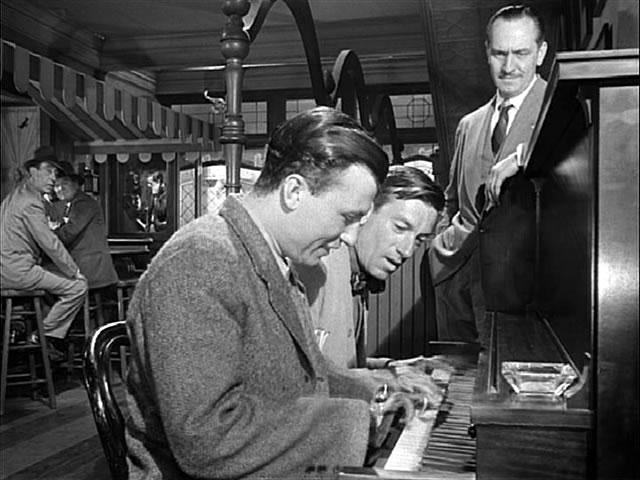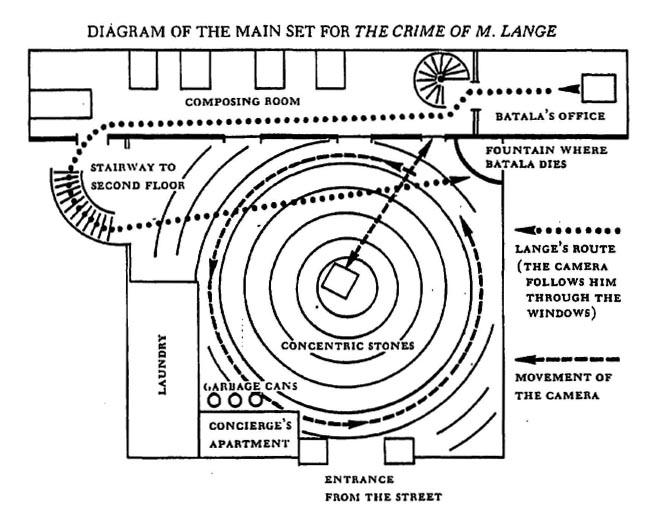Difference between revisions of "JCM312/Bazinian Realism (Discussion)"
From Screenpedia
Jump to navigationJump to search| Line 1: | Line 1: | ||
| − | + | =="The Evolution of Film Language"== | |
| − | #'''Group 1:''' Bazin sees "two broad and opposing trends in the cinema between 1920 and 1940: those directors who put their faith in the image and those who put their faith in reality." What does Bazin mean by faith in reality? | + | #'''Group 1:''' Bazin sees "two broad and opposing trends in the cinema between 1920 and 1940: those directors who put their faith in the image and those who put their faith in reality." What does Bazin mean by faith in reality? To which early filmmakers does he trace this tendency back? |
#'''Group 2:''' Bazin sees "two broad and opposing trends in the cinema between 1920 and 1940: those directors who put their faith in the image and those who put their faith in reality." Bazin says the "faith in image" directors can be "traced back to two factors." What are they? How does a Russian film movement exemplify one of these factors? | #'''Group 2:''' Bazin sees "two broad and opposing trends in the cinema between 1920 and 1940: those directors who put their faith in the image and those who put their faith in reality." Bazin says the "faith in image" directors can be "traced back to two factors." What are they? How does a Russian film movement exemplify one of these factors? | ||
#'''Group 3:''' Bazin contends that "analytic" or "dramatic" editing (i.e., "shooting script") was "strongly challenged by the technique of composition in depth used by Orson Welles and William Wyler." What is composition in depth? What are some examples from Welles's, Wyler's and/or Renoir's work? How does composition in depth "demand a more active mental attitude" and "bring ambiguity back into the structure of the image"? | #'''Group 3:''' Bazin contends that "analytic" or "dramatic" editing (i.e., "shooting script") was "strongly challenged by the technique of composition in depth used by Orson Welles and William Wyler." What is composition in depth? What are some examples from Welles's, Wyler's and/or Renoir's work? How does composition in depth "demand a more active mental attitude" and "bring ambiguity back into the structure of the image"? | ||
| Line 7: | Line 7: | ||
[[File:BestYears01.jpg]] | [[File:BestYears01.jpg]] | ||
| − | + | =="The Era of the Popular Front."== | |
#'''Group 4:''' Bazin maintains that the camera movement when Batala is murdered at the end of ''The Crime of M. Lange'' ([http://www.tcf.ua.edu/Classes/Jbutler/T340/CrimeOfMLange.htm see images online]) "is the pure spatial expression of the entire mise-en-scene". What do you think Bazin means by this? How is he using the term "mise-en-scene" (is it the same as in ''Television''?)? | #'''Group 4:''' Bazin maintains that the camera movement when Batala is murdered at the end of ''The Crime of M. Lange'' ([http://www.tcf.ua.edu/Classes/Jbutler/T340/CrimeOfMLange.htm see images online]) "is the pure spatial expression of the entire mise-en-scene". What do you think Bazin means by this? How is he using the term "mise-en-scene" (is it the same as in ''Television''?)? | ||
#*Hint: remember the original scenario for the film was titled, ''On the Courtyard''. | #*Hint: remember the original scenario for the film was titled, ''On the Courtyard''. | ||
| − | #*Compare with [http://www.tcf.ua.edu/EO/DV/GrandIllusion_Marseillaise.php the ''Grand Illusion'' shot of POWs singing "La Marseillaise"]. | + | #*Compare with camera movement in the "Dance Macabre" segment of ''Rules of the Game'': http://www.tcf.ua.edu/EO/DV/RulesOfTheGame_MasqueradeJW6.php |
| + | #*http://www.tcf.ua.edu/Classes/Jbutler/T340/RulesOfTheGame/Rules_13.jpg | ||
| + | #**See also, [http://www.tcf.ua.edu/EO/DV/GrandIllusion_Marseillaise.php the ''Grand Illusion'' shot of POWs singing "La Marseillaise"]. | ||
#'''All Groups:''' What error does Bazin make in describing the shot he diagrams? | #'''All Groups:''' What error does Bazin make in describing the shot he diagrams? | ||
Revision as of 13:39, 1 October 2013
"The Evolution of Film Language"
- Group 1: Bazin sees "two broad and opposing trends in the cinema between 1920 and 1940: those directors who put their faith in the image and those who put their faith in reality." What does Bazin mean by faith in reality? To which early filmmakers does he trace this tendency back?
- Group 2: Bazin sees "two broad and opposing trends in the cinema between 1920 and 1940: those directors who put their faith in the image and those who put their faith in reality." Bazin says the "faith in image" directors can be "traced back to two factors." What are they? How does a Russian film movement exemplify one of these factors?
- Group 3: Bazin contends that "analytic" or "dramatic" editing (i.e., "shooting script") was "strongly challenged by the technique of composition in depth used by Orson Welles and William Wyler." What is composition in depth? What are some examples from Welles's, Wyler's and/or Renoir's work? How does composition in depth "demand a more active mental attitude" and "bring ambiguity back into the structure of the image"?
- You can find examples here: tcf.ua.edu/Classes/Jbutler/T340/Bazin02.htm
"The Era of the Popular Front."
- Group 4: Bazin maintains that the camera movement when Batala is murdered at the end of The Crime of M. Lange (see images online) "is the pure spatial expression of the entire mise-en-scene". What do you think Bazin means by this? How is he using the term "mise-en-scene" (is it the same as in Television?)?
- Hint: remember the original scenario for the film was titled, On the Courtyard.
- Compare with camera movement in the "Dance Macabre" segment of Rules of the Game: http://www.tcf.ua.edu/EO/DV/RulesOfTheGame_MasqueradeJW6.php
- http://www.tcf.ua.edu/Classes/Jbutler/T340/RulesOfTheGame/Rules_13.jpg
- All Groups: What error does Bazin make in describing the shot he diagrams?
Bibliography
- Bazin, André. "The Evolution of Film Language." In The New Wave, pp. 24-51. Edited and translated by Peter Graham. Garden City, NY: Doubleday, 1968.
- Bazin, André. "The Era of the Popular Front." In Jean Renoir, pp. 36-52. Edited and with an introduction by Francois Truffaut. Translated by W. W. Halsey II and William H. Simon. NY: Simon & Schuster, 1973.

